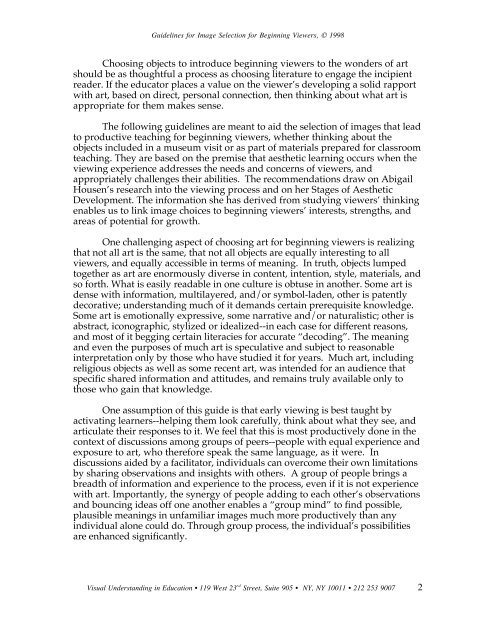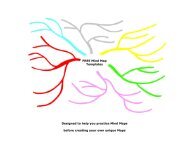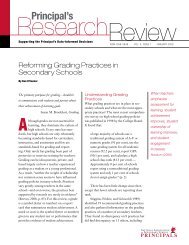Guidelines for Image Selection for Beginning Viewers - eStaffRoom
Guidelines for Image Selection for Beginning Viewers - eStaffRoom
Guidelines for Image Selection for Beginning Viewers - eStaffRoom
Create successful ePaper yourself
Turn your PDF publications into a flip-book with our unique Google optimized e-Paper software.
<strong>Guidelines</strong> <strong>for</strong> <strong>Image</strong> <strong>Selection</strong> <strong>for</strong> <strong>Beginning</strong> <strong>Viewers</strong>, © 1998<br />
Choosing objects to introduce beginning viewers to the wonders of art<br />
should be as thoughtful a process as choosing literature to engage the incipient<br />
reader. If the educator places a value on the viewer’s developing a solid rapport<br />
with art, based on direct, personal connection, then thinking about what art is<br />
appropriate <strong>for</strong> them makes sense.<br />
The following guidelines are meant to aid the selection of images that lead<br />
to productive teaching <strong>for</strong> beginning viewers, whether thinking about the<br />
objects included in a museum visit or as part of materials prepared <strong>for</strong> classroom<br />
teaching. They are based on the premise that aesthetic learning occurs when the<br />
viewing experience addresses the needs and concerns of viewers, and<br />
appropriately challenges their abilities. The recommendations draw on Abigail<br />
Housen’s research into the viewing process and on her Stages of Aesthetic<br />
Development. The in<strong>for</strong>mation she has derived from studying viewers’ thinking<br />
enables us to link image choices to beginning viewers’ interests, strengths, and<br />
areas of potential <strong>for</strong> growth.<br />
One challenging aspect of choosing art <strong>for</strong> beginning viewers is realizing<br />
that not all art is the same, that not all objects are equally interesting to all<br />
viewers, and equally accessible in terms of meaning. In truth, objects lumped<br />
together as art are enormously diverse in content, intention, style, materials, and<br />
so <strong>for</strong>th. What is easily readable in one culture is obtuse in another. Some art is<br />
dense with in<strong>for</strong>mation, multilayered, and/or symbol-laden, other is patently<br />
decorative; understanding much of it demands certain prerequisite knowledge.<br />
Some art is emotionally expressive, some narrative and/or naturalistic; other is<br />
abstract, iconographic, stylized or idealized--in each case <strong>for</strong> different reasons,<br />
and most of it begging certain literacies <strong>for</strong> accurate “decoding”. The meaning<br />
and even the purposes of much art is speculative and subject to reasonable<br />
interpretation only by those who have studied it <strong>for</strong> years. Much art, including<br />
religious objects as well as some recent art, was intended <strong>for</strong> an audience that<br />
specific shared in<strong>for</strong>mation and attitudes, and remains truly available only to<br />
those who gain that knowledge.<br />
One assumption of this guide is that early viewing is best taught by<br />
activating learners--helping them look carefully, think about what they see, and<br />
articulate their responses to it. We feel that this is most productively done in the<br />
context of discussions among groups of peers--people with equal experience and<br />
exposure to art, who there<strong>for</strong>e speak the same language, as it were. In<br />
discussions aided by a facilitator, individuals can overcome their own limitations<br />
by sharing observations and insights with others. A group of people brings a<br />
breadth of in<strong>for</strong>mation and experience to the process, even if it is not experience<br />
with art. Importantly, the synergy of people adding to each other’s observations<br />
and bouncing ideas off one another enables a “group mind” to find possible,<br />
plausible meanings in unfamiliar images much more productively than any<br />
individual alone could do. Through group process, the individual’s possibilities<br />
are enhanced significantly.<br />
Visual Understanding in Education • 119 West 23 rd Street, Suite 905 • NY, NY 10011 • 212 253 9007 2






